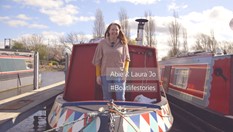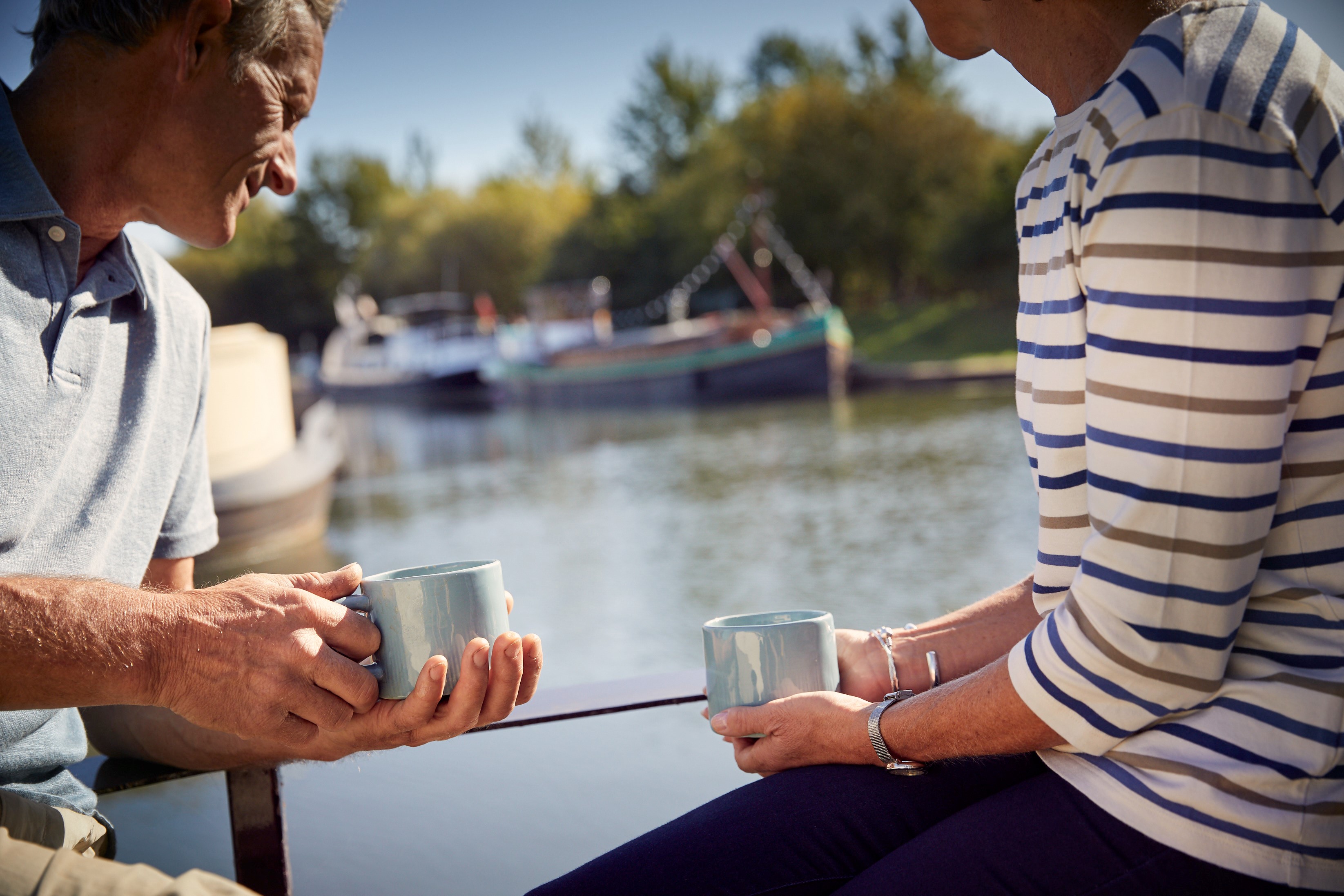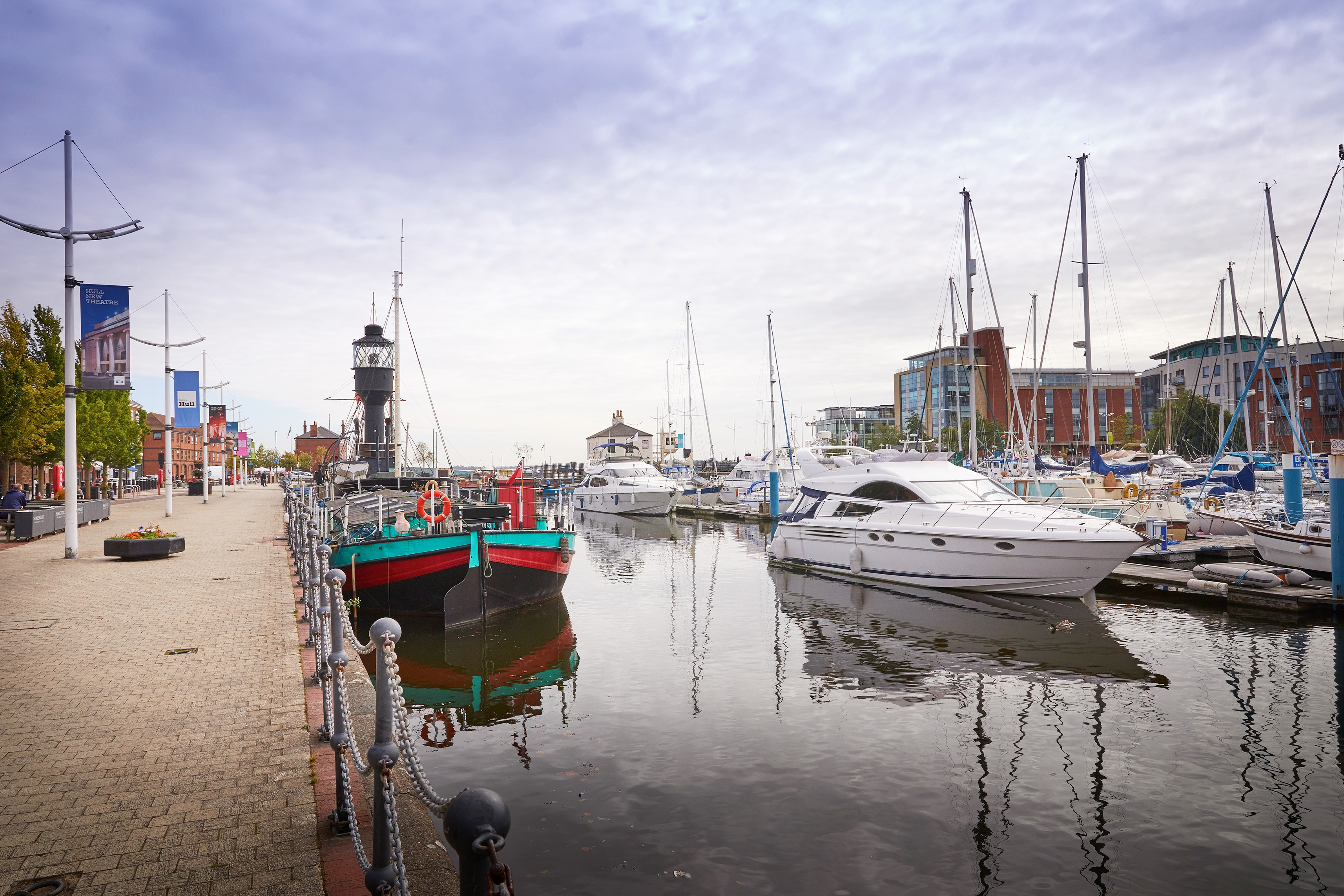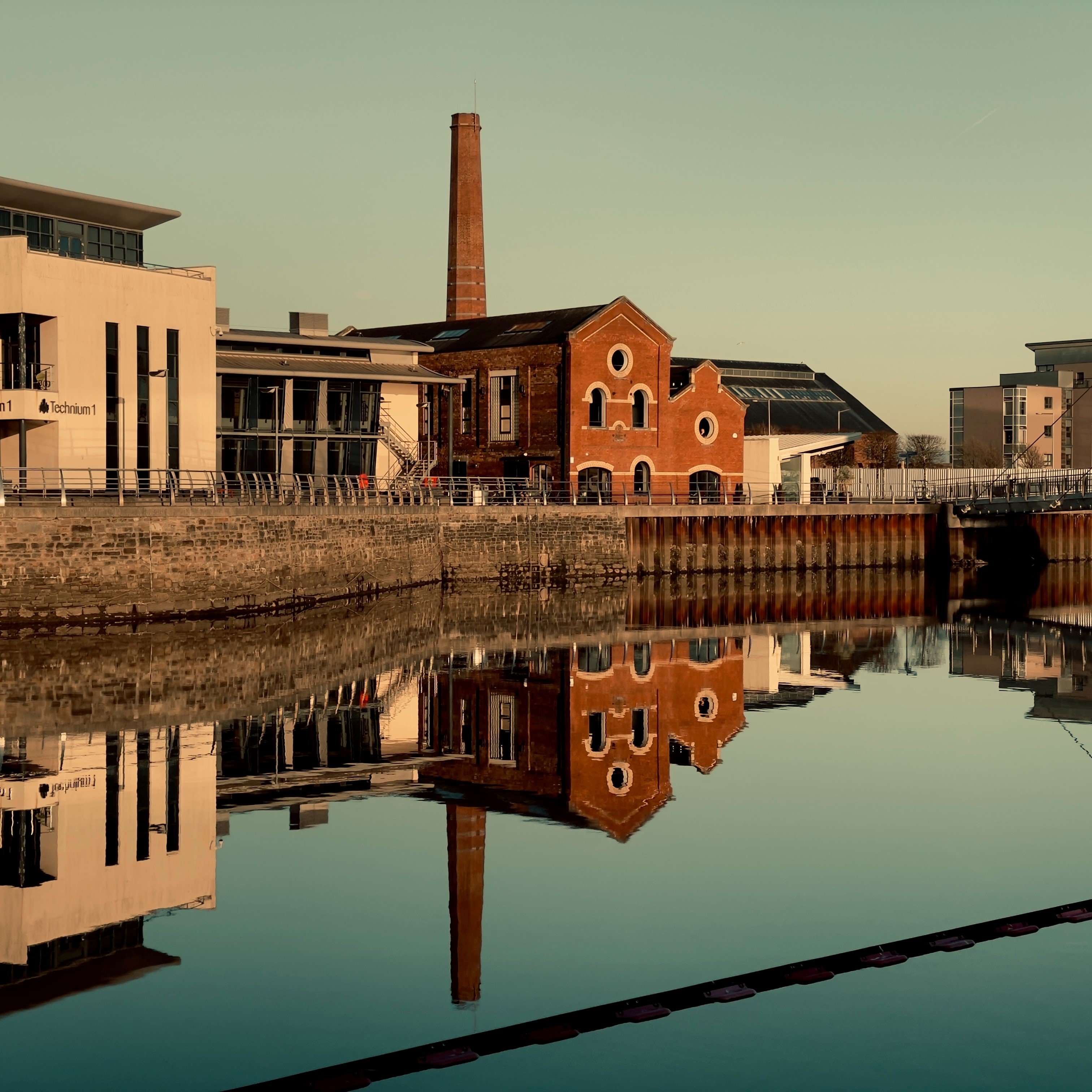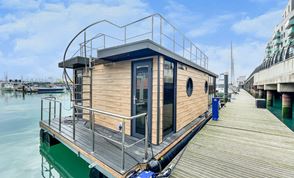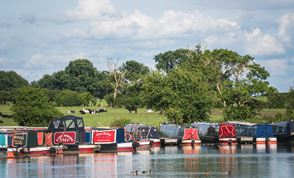Waterways, Lakes and Seas: Where in the UK has the most blue space?
Have you ever felt a wash of calm pass over you when you’ve looked over the ocean? Or felt energised as you’ve walked along a river or lake shore? Do you relish the idea of a gentle trip down a canal? Well, you’re not alone.
It’s scientifically proven that spending time near blue spaces, like lakes, canals and beaches offers a host of physical and psychological benefits. Psychologist Dr Eldad Farhy, states that “living within easy reach of a water source and spending time there is significantly and positively associated with life satisfaction and positive mental health”.
Whether it’s because of the meditative sound of waves gently kissing your boat or the cathartic rush of a stormy seashore, marine and coastal locations are some of the happiest locations in the world. Even destinations with urban water features have been shown to have a boosted wellbeing score.
But how can we make the most out of our time near blue spaces? Dr Farhy shares his top tips for using blue spaces as a tool for boosting mental health:
- Take time to look at and appreciate the water, at its calmness, its expanse, its uniformity, its predictability. Let it help you to regulate your emotions, to gain a sense of perspective, and to remember that whatever is going on in your life, things will be ok. In the same way that choppy waters will grow calm again as soon as the wind dies down.
- If you are able to, try out an activity near the water. Even if it’s just walking around the blue space, this will increase your mental wellbeing and is more effective than simply sunbathing. Although that has its merits too!
- Let the water and the air around you help you to focus on your own mind. Look at the ripples, or the flow of water, or the boats slowly drifting, and let them remind you that just as bad thoughts will come into your head, they will inevitably then go out of your head.
- Finally, remember that when you are surrounded by blue space, there is really nothing that can distract you from your thoughts. Do not seek to run away from them, instead just experience them and allow them to come and go, just like the rhythm of the tide.
Thanks to over 30,000 km of varied and beautiful coastline, 7,500 km of navigable canals and rivers, a wealth of gorgeous marinas and quays, and an incredible 40,000 lakes, we know that the UK is not short of wonderful blue spaces to help keep spirits high and temperaments calm. However, we wanted to learn more about which parts of the UK have the most access to blue space. So, we conducted a study, analysing data on each county’s access to lakes, canals and beaches to find out which areas have the most blue space per km2.
We’ve split our findings down by country to delve into the individual counties in England, Scotland, Wales and Northern Ireland, and here’s what we discovered:
Top areas in England with the most access to blue space
Home to a total of 12 beautiful and unique lakes and 141 beaches Cornwall has the most access to blue spaces for its size than any other English county. From fishing villages like Port Isaac and holiday resorts such as St Ives, to Cornwall’s Bude Canal which was renowned for being one of the most unusual canals designed in the UK due to its use of six inclined planes to carry wheeled tub boats up its slopes, the county has a varied and interesting blue landscape.
Whilst it’s of little surprise that Cornwall has topped the list, the most interesting finding was that the landlocked county of the West Midlands ranked at second place. Despite having no direct coastal access, the county is home to a total of 9 lakes and 26 canals, so scores highly for access to blue space. Its largest city, Birmingham has one of the most intricate canal networks in the world and was once the pride of Victorian Birmingham. The Birmingham Canal Network started construction in 1768 and at its height, had more than 170 miles of canals, transporting coal, iron and other heavy goods from Birmingham and the Black Country to other cities and towns. Today, there is still over 100 miles of navigable waterways in the network, 35 miles of which are located within the city, famously making Birmingham home to a larger canal system than Venice! Lined with a series of modern restaurants, cafes and bars whilst still retaining its beautiful Victorian architecture, the Birmingham Canals are one of the top tourist destinations in the West Midlands and the ideal location to spend some quality time amongst blue space.
Two other landlocked counties, Greater Manchester and South Yorkshire, make the top 10, reinforcing the fact that it’s not just coastal access that enables us to enjoy blue spaces. The rivers, lakes and canals of these two counties generate some fantastic opportunities for residents and visitors to appreciate the calming and restorative pleasures of being close to water.
|
1. |
Cornwall |
24. |
Leicestershire |
|
2. |
West Midlands |
25. |
West Yorkshire |
|
3. |
Tyne and Wear |
26. |
Northumberland |
|
4. |
Merseyside |
27. |
Northamptonshire |
|
5. |
Dorset |
28. |
Warwickshire |
|
6. |
Greater Manchester |
29. |
Hampshire |
|
7. |
Devon |
30. |
Suffolk |
|
8. |
South Yorkshire |
31. |
Berkshire |
|
9. |
East Sussex |
32. |
North Yorkshire |
|
10. |
West Sussex |
33. |
Shropshire |
|
11. |
Kent |
34. |
Buckinghamshire |
|
12. |
Somerset |
35. |
Hertfordshire |
|
13. |
Greater London |
36. |
Gloucestershire |
|
14. |
Lancashire |
37. |
Lincolnshire |
|
15. |
Norfolk |
38. |
Oxfordshire |
|
16. |
Cheshire |
39. |
Nottinghamshire |
|
17. |
East Yorkshire |
40. |
Cambridgeshire |
|
18. |
Durham |
41. |
Worcestershire |
|
19. |
Derbyshire |
42. |
Herefordshire |
|
20. |
Essex |
43. |
Bedfordshire |
|
21. |
Surrey |
44. |
Wiltshire |
|
22. |
Cumbria |
45. |
Bristol, City of London and Rutland |
|
23. |
Staffordshire |
|
Our North England Aquavista marinas are fantastic spots to relax by the waterside, or even live or work, helping you make the most of all the wellbeing benefits of spending time beside beautiful blue spaces. Hull Waterside Marina is a calming, peaceful spot just 10 minutes from the vibrant city centre. If you were looking for something more active, The Wold’s Way and Beverley walking route starts in nearby Hessle. The trail which is perfect for either running, walking or hiking is a scenic 27.4km route which follows the crescent of the enchanting Yorkshire Wolds
Also in Yorkshire is Ripon Waterside Marina, which sits on the Ripon canal and is an idyllic spot for spotting rare wildlife, watching the canal boats and relaxing on the shoreline.
Further down south you will find Priory Waterside Marina. An oasis of peace and tranquility, Priory Waterside & Marina is tucked away on the banks of the River Great Ouse, set within the 250-acre Priory Country Park. For those who like to explore by foot you have two options to explore the very best of the area, either a picturesque walk around the lakes and meadows or a ramble along the river embankments and over town bridge – the perfect way to spend your time near the waterside.
Top areas in Scotland with the most access to blue space
Scotland is home to well over 1,000 lochs, so the country is world famous for its iconic blue spaces. Our research revealed that East Lothian was the Scottish area with the most access to blue space, thanks to long stretches of coastline and, arguably, some of the country’s most beautiful beaches, such as Gullane and Yellowcraig Beaches. Both the River Esk and the River Tyne wind through the county as well, so there’s also plenty of options for freshwater shore experiences as well.
Edinburgh featured second on the list, located right on the coastline and with the city of Edinburgh's sights and landmarks lining the banks of the River Tyne, it’s the perfect location to find blue spaces.
Whilst both East Lothian and Edinburgh boast impressive beaches, it’s Glasgow in third place that is the most interesting, placing highly on the list without even having a beach. Set around the River Clyde, and with Seven Locks Wetland Park right on the doorstep, Glasgow and its surrounding area is home to a number of lochs and is placed right at the heart of the Forth & Clyde Canal. Glasgow’s section of the Forth & Clyde Canal has been recently renovated into a vibrant corridor that boasts historic buildings, world leading design agencies and even an urban watersports centre for the more adventurous water lover. For those who prefer to take it easy on the water (like us!) you will also find a number of house and hotel boats dotted along the canal, making it the perfect Scottish location for unwinding by the waterside.
Despite the Highlands containing a whopping 652 different lochs, including the world famous Loch Ness, the sheer size of the area it’s situated in means that the county only comes in at number 10 on the list.
|
1. |
East Lothian |
17. |
Argyll and Bute |
|
2. |
Edinburgh |
18. |
Perth and Kinross |
|
3. |
Glasgow |
19. |
Stirling |
|
4. |
Dundee |
20. |
Angus |
|
5. |
East Dunbartonshire |
21. |
Falkirk |
|
6. |
South Ayrshire |
22. |
Moray |
|
7. |
West Dunbartonshire |
23. |
Na h-Eileanan Siar (Western Isles) |
|
8. |
Fife |
24. |
Orkney Islands |
|
9. |
East Renfrewshire |
25. |
Aberdeenshire |
|
10. |
Highland |
26. |
Shetland Islands |
|
11. |
Inverclyde |
27. |
Aberdeen |
|
12. |
North Ayrshire |
28. |
Scottish Borders |
|
13. |
Renfrewshire |
29. |
West Lothian |
|
14. |
Dumfries and Galloway |
30. |
South Lanarkshire |
|
15. |
East Ayrshire |
31. |
Midlothian and Clackmannanshire |
|
16. |
North Lanarkshire |
|
Top areas of Wales with the most access to blue space
With 27 beaches, 6 lakes, 1 canal and spanning 378 km2 the county of Swansea was found to be the number one county in Wales for access to blue space. As the city hugs the banks of the River Taw, Swansea also boasts a modern marina and huge stretches of sandy beach curving around Swansea Bay. Whether you’re looking to stay active or just relax, Singleton Park will have plenty of waterside fun for you to enjoy on the boating lake. Meanwhile, one of Swansea’s jewels is Swansea Canal. Built between 1794 and 1798 the canal originally ran for 16.5 miles, however today, just 5 miles are navigable and although short, the waterway packs in some beautiful surroundings. One of the most stunning sights can be found at the impressive Lower Clydach Aqueduct, where you can see a grand meeting of the waters, where the canal joins with the Lower Clydach River and the River Tawe.
The Swansea Canal has even been awarded a prestigious Green Flag in Keep Britain Tidy's Award Scheme.
As an island off the coast of north-west Wales, it’s no surprise that Anglesey takes second spot in the country. With 200km’s of coastal path, nature lovers, hikers and day-trippers-alike can enjoy the benefits of the blue spaces here with ease. It even has its own island-within-an-island, with the ruined church on Llanddwyn Island being one of the most picturesque spots in the area.
In third place is Bridgend, located between Swansea and Cardiff on the south coast. The River Ogmore winds through the town itself and the River Ewenny passes close by, as the area stretches all the way to the Glamorgan Heritage Coast, with the seaside resort of Porthcawl to the south west. There are also several stunning nature reserves which offer their own blue spaces in the area.
|
1. |
Swansea |
12. |
Ceredigion |
|
2. |
Isle of Anglesey |
13. |
Torfaen |
|
3. |
Bridgend |
14. |
Rhondda Cynon Taf |
|
4. |
Merthyr Tydfil |
15. |
Denbighshire |
|
5. |
Vale of Glamorgan |
16. |
Wrexham |
|
6. |
Pembrokeshire |
17. |
Flintshire |
|
7. |
Blaenau Gwent |
18. |
Carmarthenshire |
|
8. |
Cardiff |
19. |
Powys |
|
9. |
Gwynedd |
20. |
Monmouthshire |
|
10. |
Neath Port Talbot |
21. |
Caerphilly and Newport |
|
11. |
Conwy † |
|
Counties in Northern Ireland with the most access to blue space
With only six counties to investigate in Northern Ireland, the research unveiled some surprising findings when it came to which areas in the country have the most access to blue spaces.
Spanning over 2,400 km² and containing 3 lakes, 2 canals and 14 beaches, County Down was found to be the region with the most access to blue space. Both canals in the county, the Newry Canal and the Lagan Canal both stretch 43 km, with the Newry Canal connecting to the County of Armagh and the Lagan Canal to County Antrim. Interestingly however, neither canal is still in use. For beach-lovers, you’ll find a range of different coastal styles in the region, from the vast golden sands of Murlough Beach to the gentle waters of Millisle Lagoon Beach, which are perfect for swimming.
In second place, County Antrim covers a large section of the north-eastern coast of Northern Ireland, and also curves around the shores of Lough Neagh, the largest lake in the British Isles. Giant’s Causeway is probably one of the most famous stretches of beaches in Northern Ireland, thanks to its unique interlocking hexagonal rocks. However, the area also offers a range of other seaside locations, offering sandy coastlines, dunes, fishing villages and surfing beaches.
With the third highest number of blue spaces in Northern Ireland, County Londonderry is sandwiched between the north coast of the country and the banks of Lough Neagh to its south. The historic city of Derry/Londonderry sits snug on the River Foyle, while the area links to County Antrim and the Giant’s Causeway itself via the Causeway Coastal Route.
- County Down
- County Antrim
- County Londonderry
- County Fermanagh
- County Armagh
- County Tyrone
To truly make the most of all of the incredible benefits, experiences and joy that comes with being near blue spaces, why not consider buying a boat and taking to the water yourself? Take up a new hobby by learning to sail the waves, or perhaps even consider a new dream floating home. Get in touch with our brokerage team to discuss in more detail.

